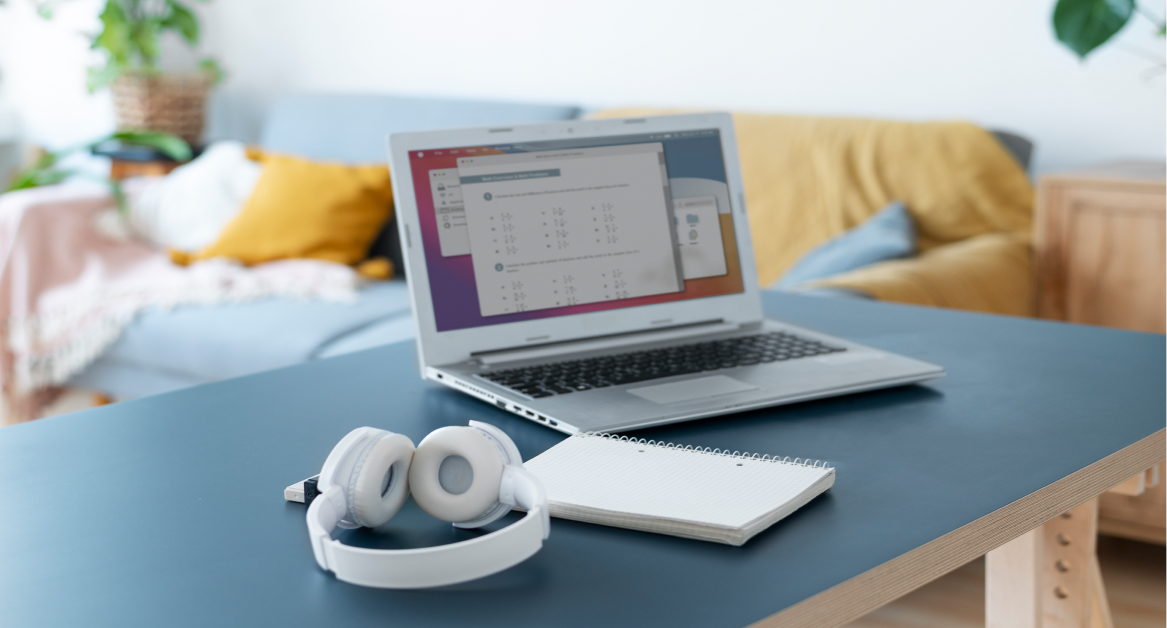The ability to work from anywhere has transformed how businesses operate. Central to this transformation are remote devices—tools that enable employees to perform their tasks outside traditional office settings.
Understanding these devices, their functionalities, and how to manage them effectively is crucial for organizations aiming to thrive in a hybrid work environment.
What are remote devices?
Remote devices are any digital tools—like laptops, smartphones, tablets, or desktop computers—that employees use outside of a traditional office setting. These devices are typically connected to a company’s systems through the internet, enabling users to access files, apps, and communication tools from virtually anywhere.
They are the foundation of remote and hybrid work. From accessing customer data to running analytics and joining meetings, remote devices power everything a modern workforce needs to stay efficient across locations.
What makes them “remote” isn’t just the location—it’s the ability to be controlled remotely. With remote access software, companies can manage, update, troubleshoot, and secure devices even when they’re not on-site. Whether it’s pushing security patches, monitoring device usage, or setting access control policies, IT teams don’t need physical access to keep things running smoothly.
Here are a few common examples of remote devices:
- Laptops and desktops configured for remote access or remote desktop
- Mobile devices like smartphones and tablets used for work-related tasks
- Virtual machines and cloud-based systems accessible from multiple operating systems
- IoT devices used in fieldwork or offsite operations
Key features that make remote devices effective
For remote devices to truly support productivity and security, they need more than just a working internet connection. The real value comes from how well they’re managed, secured, and integrated into your business systems.
Here are the key features that make remote devices effective:
1. Remote accessibility
Remote devices must offer seamless access to files, applications, and systems, regardless of the user’s location. This is typically enabled through remote access software, VPNs, or cloud-based platforms that allow employees to work as if they were in the office.
2. Centralized control and monitoring
One of the biggest advantages of remote device management is centralized visibility. IT teams can track device usage, performance, and compliance from a single dashboard. A robust remote device management platform gives teams the power to monitor devices in real time, push updates, and troubleshoot issues without needing physical access.
3. Security and malware protection
Security risks increase when devices leave the office. That’s why strong malware protection, encryption, and access control measures are non-negotiable. Devices need to be protected against unauthorized access, data loss, and cyber threats, especially when connected to unsecured networks.
4. Compatibility with multiple operating systems
Hybrid teams often use a mix of Windows, macOS, Linux, Android, and iOS devices. An effective system must support various operating systems to ensure consistent security, application compatibility, and performance across the board.
5. Integration with mobile device management (MDM)
Mobile device management software helps control devices remotely by enforcing security policies, managing app installations, and enabling remote lock or wipe in case of loss or theft. Whether it’s a smartphone or a laptop, MDM ensures every mobile device stays compliant and protected.
6. Automation and real-time updates
Modern device management isn’t scalable without automation. Tasks like patch management, license renewals, and performance monitoring should happen automatically. Real-time updates help minimize downtime and ensure employees always have the tools they need to work efficiently.
7. Support for license and asset tracking
Remote work doesn’t mean losing sight of your assets. License management software plays a key role in tracking software usage and staying compliant. IT teams need visibility into which tools are installed, which licenses are active, and when renewals are due.
8. Remote support
Things will go wrong—devices crash, apps break, users get stuck. Fast, effective remote support is essential to keeping teams productive. IT teams should be able to access devices remotely to troubleshoot and resolve issues, often without the user needing to lift a finger.
Challenges in managing remote devices
Managing remote devices comes with real advantages—but also some serious challenges.
Let’s look at the biggest hurdles companies face:
1. Lack of physical access
IT teams cannot physically inspect or fix devices when employees work remotely. This limits their ability to perform hands-on troubleshooting or enforce policies manually. Everything has to be handled through remote tools—which makes the right software a must-have.
2. Increased security risks
Remote devices often connect from unsecured networks like coffee shops or home Wi-Fi. This exposes them to greater risks of hacking, phishing, and data breaches. Without strong malware protection and access control, one compromised device can put the whole organization at risk.
3. Managing diverse operating systems and hardware
In a hybrid or BYOD (bring your own device) environment, IT teams deal with a mix of operating systems and hardware setups. That makes it harder to maintain consistent security settings, push updates, or troubleshoot issues efficiently.
4. Difficulty tracking software licenses
Without a central system, keeping track of who’s using what software—and whether it’s properly licensed—becomes a mess. License management software is critical, but many companies still rely on spreadsheets or outdated methods, increasing the risk of compliance issues.
5. Supporting remote teams around the clock
With employees spread across multiple time zones, IT issues can arise at any hour. Without reliable 24/5 support, team members may face long downtimes waiting for help—hurting productivity, morale, and momentum.
6. Balancing visibility, control, and privacy
Managing remote or personal devices means walking a fine line. Companies need visibility into device health and threats to stay secure, but they also must respect user privacy. The right remote management solution ensures oversight without overreach.
Best practices for managing remote devices in hybrid work
The shift to hybrid work isn’t just a trend—it’s a long-term reality. To succeed, businesses need a clear strategy for managing their remote devices in a way that’s secure, efficient, and scalable.

1. Use a unified remote device management platform
Managing dozens—or hundreds—of devices across regions is impossible without the right tools. A centralized remote device management solution lets IT teams monitor, update, and support devices from one place. Look for platforms that integrate features like remote support, mobile device management, and license tracking.
🚀 Esevel offers an all-in-one platform that gives companies complete control over their device fleet, no matter where employees are located.
2. Automate provisioning and de-provisioning
Manual setups are time-consuming and error-prone. Automating the provisioning process ensures that new hires get pre-configured devices with the right tools and security settings. Similarly, automated de-provisioning protects company data when someone leaves by revoking access and resetting the device.
3. Enforce consistent security policies
Whether someone is working on a corporate laptop or a mobile device, your security policies should apply equally. Use mobile device management software to enforce encryption, install antivirus tools, and control app access. Require multi-factor authentication and set up access control based on roles and risk levels.
4. Communicate policies and expectations clearly
Keep remote employees informed about IT policies, from acceptable device use to software installation and issue reporting. Clear documentation and regular check-ins reduce confusion and build a stronger, more secure remote culture.
5. Enable secure remote access
Remote desktop tools and remote access software allow IT teams to support users without being physically present. Just make sure the tools you choose include security features like encryption, session logging, and limited access windows to reduce security risks.
6. Plan for hardware repair and replacement
When devices break, you need a plan. Partner with a remote device management provider that can offer global hardware support—including repair logistics and loaner devices—to minimize downtime.
💡 Esevel provides fast hardware support across 88+ countries, making it easy to keep your workforce up and running.
7. Monitor software usage and license compliance
Don’t lose track of your software licenses. Use license management software to see what tools are being used, who’s using them, and when renewals are due. This saves money and keeps you compliant.
Take control of your remote devices today
Remote work has redefined how we use and manage devices. But with that freedom comes new layers of complexity—security concerns, access issues, software sprawl, and the pressure to support employees in real time.
What if you didn’t have to juggle it all manually?
Imagine having one platform that brings everything together: device procurement, security, license tracking, remote support, and more. A system that works quietly in the background so your team can stay focused, productive, and protected—wherever they are.
That’s exactly what Esevel is built to do.
Designed for companies with distributed teams, Esevel simplifies the entire IT lifecycle—from onboarding new hires with pre-configured devices to resolving tech issues across continents.







